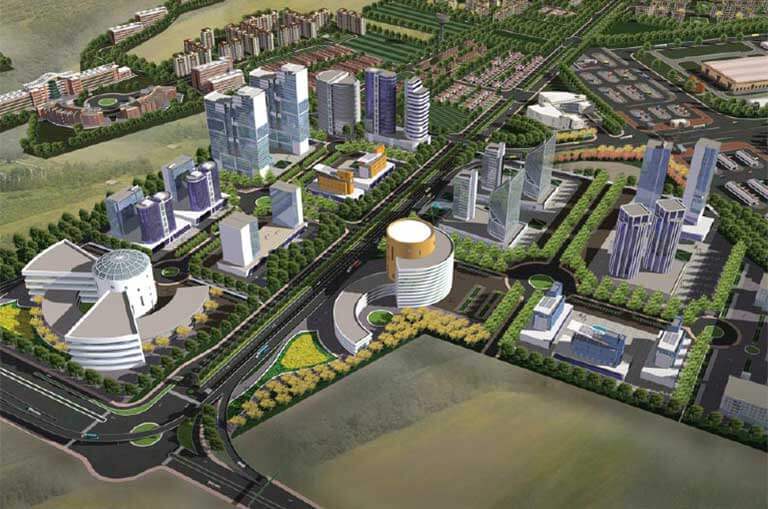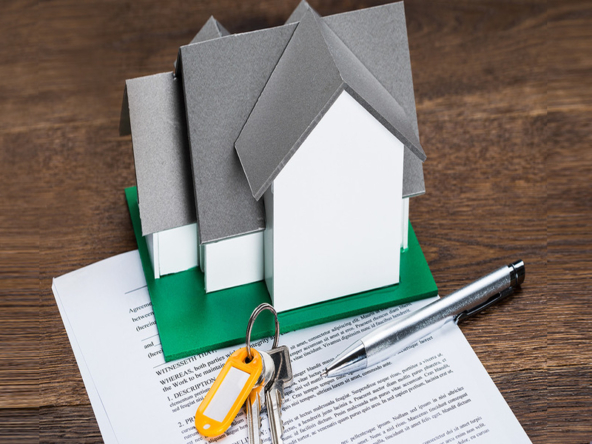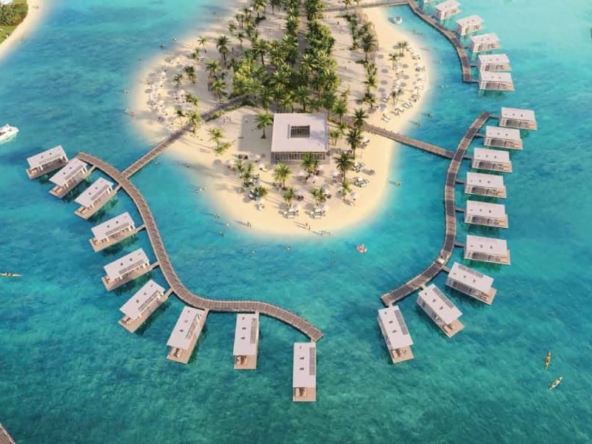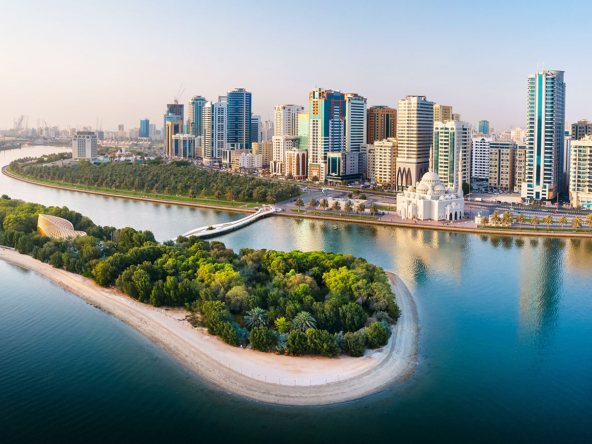Dubai, a city renowned for its relentless pursuit of innovation and grandeur, is poised to embark on another ambitious venture: completing $200 million worth of endowment real estate projects by 2026. This massive investment not only underscores Dubai’s commitment to sustainable development but also signifies a strategic integration of Islamic philanthropy, known as Awqaf, with contemporary urban planning. These endowment projects are designed to fund a wide array of social, cultural, and educational initiatives, ensuring that the benefits of Dubai’s growth are distributed equitably across society.
As the city prepares to add these monumental Real Estate projects to its ever-expanding skyline, it’s evident that Dubai is setting new benchmarks in combining economic progress with social responsibility. This article delves into the vision, strategic implications, and broader impact of these transformative projects, showcasing how they will reshape both the physical and social landscapes of Dubai.
Dubai’s Bold Move in Real Estate Projects
The Vision Behind the $200 Million Endowment Projects
At the heart of Dubai’s endowment real estate initiative lies a visionary approach that intertwines the principles of Awqaf with modern urban development. Awqaf, a form of Islamic endowment, involves dedicating assets or properties for the public good, often to support charitable, educational, or religious causes. In the context of Dubai’s latest projects, the $200 million investment in real estate is aimed at creating a sustainable revenue stream that will fund various community-focused endeavors, including healthcare, education, and cultural preservation.
This initiative is part of Dubai’s broader strategy to preserve its cultural heritage while embracing the demands of a rapidly modernizing city. By leveraging Awqaf, Dubai is not only maintaining its commitment to Islamic values but also ensuring that its growth benefits all segments of society. These projects reflect the city’s forward-thinking leadership, which understands that true progress is measured not just by economic indicators but by the welfare of its people. Real Estate
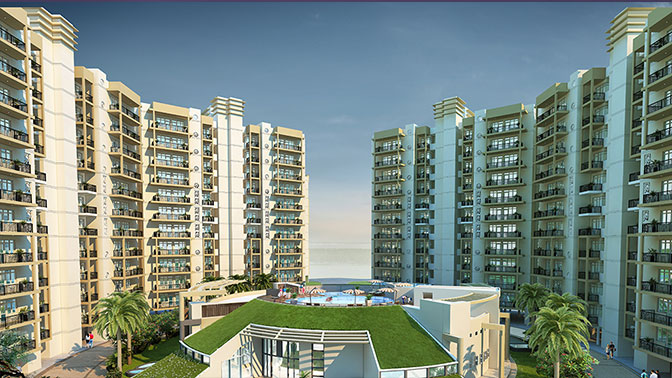
Strategic Locations: Maximizing Impact Across the City
One of the defining features of Dubai’s endowment real estate projects is the careful selection of strategic locations. These projects are set to be developed in key areas across the city, maximizing both their visibility and their potential impact on surrounding communities. The locations have been chosen based on their proximity to essential services and amenities, ensuring that the endowment properties generate significant revenue that can be reinvested into the community.
For instance, several of these Real Estate projects will be located near major educational institutions, allowing the income generated to directly support scholarships, research grants, and the development of educational facilities. Similarly, endowment properties near healthcare hubs will ensure that a portion of the revenue is channeled into medical research, subsidized treatments, and the expansion of healthcare services for those in need.
These strategic placements are not just about maximizing financial returns; they are about creating a ripple effect that extends the benefits of these Real Estate projects far beyond their immediate surroundings. By placing these endowment properties in prime locations, Dubai is ensuring that the generated funds will continuously flow into the community, supporting long-term social and economic development.
A Model for Sustainable Urban Development
Dubai’s approach to integrating Awqaf with real estate development offers a compelling model for sustainable urban growth. Unlike traditional real estate investments that primarily focus on profit maximization, these projects are designed with a dual purpose: generating sustainable revenue while contributing to the city’s social infrastructure. The funds generated from these endowment properties will not only cover operational costs but also support Dubai’s broader social initiatives, including education, healthcare, and cultural preservation.
Moreover, these projects align with Dubai’s commitment to sustainability and green building practices. The city’s leadership has made it clear that environmental responsibility is a priority, and this is reflected in the design and construction of the endowment properties. By incorporating energy-efficient technologies, sustainable materials, and green spaces into these projects, Dubai is setting a new standard for environmentally responsible urban development. This focus on sustainability ensures that the city’s growth is not only economically viable but also ecologically sound.
The Role of Awqaf in Modern Urban Planning
The use of Awqaf in modern urban planning is a relatively novel concept, yet it holds immense potential for cities like Dubai. Traditionally, Awqaf has been used to fund religious institutions, educational endeavors, and charitable activities. By integrating Awqaf with real estate development, Dubai is expanding the scope of this Islamic philanthropic tradition, making it a cornerstone of its urban development strategy.
This approach is particularly significant in the context of Dubai’s rapid growth. As the city continues to expand, the need for sustainable funding mechanisms to support social infrastructure becomes increasingly important. Awqaf provides a unique solution to this challenge, offering a way to generate ongoing revenue for community-focused projects while also preserving the cultural and religious values that are central to Dubai’s identity.
By incorporating Awqaf into its urban planning strategy, Dubai is not only preserving its cultural heritage but also creating a framework for sustainable development that other cities in the Islamic world can emulate. This model of development ensures that the benefits of urban growth are shared broadly across society, rather than being concentrated in the hands of a few.
Public-Private Partnerships: A Key to the Success of Dubai’s Endowment Real Estate Projects
Dubai’s $200 million endowment real estate projects exemplify the effectiveness of public-private partnerships (PPPs) in achieving successful and sustainable urban development. The collaborative model between the public and private sectors has been instrumental in the realization of these ambitious projects. Here’s a detailed look at how these partnerships contribute to the success of Dubai’s endowment initiatives:
1. Strategic Collaboration Between Public and Private Sectors
Government and Private Sector Engagement:
- Government Role: Dubai’s government, through its various agencies, provides the regulatory framework, policy support, and initial funding to kickstart the endowment projects. This includes facilitating land acquisition, offering tax incentives, and ensuring that projects align with broader urban planning and social goals.
- Private Sector Contributions: Leading real estate developers, financial institutions, and philanthropic organizations bring in their expertise, financial resources, and innovative solutions. These private entities contribute to the design, construction, and management of the endowment properties, ensuring high standards of quality and efficiency.
Mutual Benefits:
- For the Government: The collaboration helps in achieving public goals such as improved infrastructure, enhanced social services, and urban beautification without bearing the full financial burden.
- For the Private Sector: Private partners gain access to lucrative development opportunities and potential returns on investment while fulfilling their corporate social responsibility objectives.
2. Ensuring Financial Viability and Alignment with Goals
Financial Viability:
- Investment and Risk Sharing: By involving private sector stakeholders, Dubai can share the financial risks associated with large-scale projects. This risk-sharing model makes the projects more feasible and attractive to investors.
- Revenue Generation: The endowment properties are designed not only to serve philanthropic purposes but also to generate revenue through real estate investments. This revenue can be reinvested to support community initiatives and sustain the projects over time.
Alignment with Urban Planning and Social Goals:
- Urban Planning: Public-private partnerships ensure that the endowment projects align with Dubai’s long-term urban development plans. This includes integrating the projects into existing infrastructure and ensuring that they complement the city’s growth strategy.
- Social Development: The projects are designed to meet specific social needs, such as affordable housing, educational facilities, and healthcare centers, thus fulfilling Dubai’s commitment to enhancing the quality of life for its residents.
3. Leveraging Expertise and Resources
Private Sector Expertise:
- Innovative Solutions: Private developers and financial institutions bring cutting-edge technologies and best practices to the projects, ensuring that they are built to the highest standards of quality and sustainability.
- Project Management: Experienced private sector partners manage the complex logistics of large-scale developments, from design and construction to operations and maintenance.
Resource Utilization:
- Financial Resources: The involvement of financial institutions ensures that the projects have access to necessary capital and financial instruments, facilitating smooth execution and long-term financial stability.
- Philanthropic Support: Philanthropic organizations contribute not only funding but also expertise in community engagement and social impact assessment, ensuring that the projects effectively address societal needs.
4. Promoting Sustainability and Long-Term Impact
Sustainability Focus:
- Design and Construction: The private sector’s expertise in sustainable building practices ensures that the endowment properties are environmentally friendly, energy-efficient, and resilient to future challenges.
- Long-Term Maintenance: By involving private partners in the management of the properties, Dubai ensures that the projects are maintained to high standards and continue to provide benefits over the long term.
Long-Term Community Support:
- Revenue Utilization: The revenue generated from the endowment properties is used to fund ongoing community initiatives, such as scholarships, healthcare programs, and social services. This ensures that the projects have a lasting positive impact on society.
- Replicability: The success of these partnerships positions Dubai as a model for other cities, demonstrating how effective collaboration between public and private sectors can achieve socially responsible urban development.
5. Positioning Dubai as a Leader in Socially Responsible Development
Global Leadership:
- Innovative Model: Dubai’s approach to leveraging public-private partnerships for endowment projects sets a benchmark for other cities. It showcases how combining financial, technical, and philanthropic resources can lead to impactful and sustainable urban development.
- Global Recognition: By pioneering this model, Dubai enhances its reputation as a global leader in socially responsible and innovative urban development, attracting international attention and investment.
Future Prospects:
- Scalability: The success of these projects opens the door for future public-private partnerships, both within Dubai and in other regions. It demonstrates a scalable model that can be adapted to various urban development contexts.
In summary, the success of Dubai’s $200 million endowment real estate projects is significantly attributed to the effective collaboration between the public and private sectors. This partnership model ensures financial viability, aligns with long-term urban and social goals, leverages expertise and resources, promotes sustainability, and establishes Dubai as a global leader in socially responsible urban development.
These partnerships are also essential in ensuring the sustainability of the projects. By involving private sector stakeholders in the planning and execution of the endowment properties, Dubai can ensure that the projects are designed with a long-term perspective. This focus on sustainability is critical to ensuring that the endowment properties continue to generate revenue and support community initiatives for years to come.
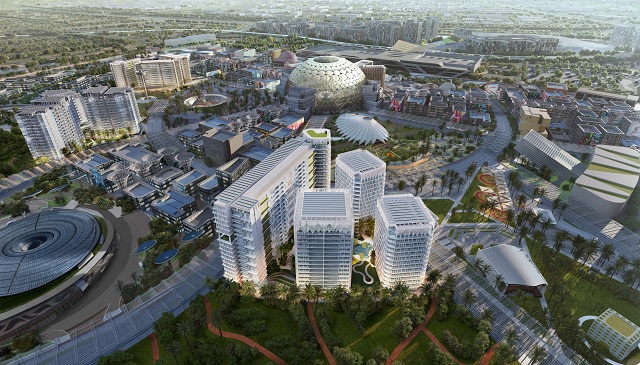
The Broader Social Impact: Beyond Bricks and Mortar
While the $200 million endowment real estate projects will undoubtedly have a significant impact on Dubai’s skyline, their true value lies in their broader social impact. These projects are not just about building new structures; they are about creating a lasting legacy that will benefit generations to come.
The revenue generated from these endowment properties will be used to fund a wide range of social initiatives, from healthcare and education to cultural preservation and community development. This holistic approach ensures that the benefits of Dubai’s growth are shared across all segments of society, from the most affluent to the most vulnerable.
In the healthcare sector, for example, the funds generated from the endowment properties will be used to support medical research, subsidize treatments for low-income patients, and expand healthcare services across the city. This investment in healthcare infrastructure will not only improve the quality of care available to Dubai’s residents but also ensure that healthcare services are accessible to all, regardless of their financial situation.
In education, the endowment projects will provide scholarships and research grants to students and researchers, helping to cultivate the next generation of leaders and innovators. By investing in education, Dubai is ensuring that its residents are equipped with the knowledge and skills needed to thrive in a rapidly changing world.
Cultural preservation is another key area that will benefit from the endowment projects. The funds generated will be used to support the preservation of Dubai’s rich cultural heritage, from historic sites and museums to traditional arts and crafts. This investment in culture not only helps to preserve Dubai’s unique identity but also ensures that future generations can continue to enjoy and learn from the city’s rich history.
A Blueprint for the Future: Dubai’s Legacy of Socially Responsible Development
As Dubai moves forward with its $200 million endowment real estate projects, it is clear that the city is not just building for today but for the future. These projects represent a bold and innovative approach to urban development, one that prioritizes social responsibility and sustainability over short-term profits.
By integrating Awqaf with modern real estate development, Dubai is creating a new model for urban growth that other cities can follow. This model ensures that the benefits of development are shared broadly across society, while also preserving the cultural and religious values that are central to Dubai’s identity.
As the endowment projects come to fruition over the next two years, they will not only enhance Dubai’s skyline but also leave a lasting impact on the city’s social infrastructure. Through these projects, Dubai is setting a new standard for urban development, one that is both economically and socially sustainable.
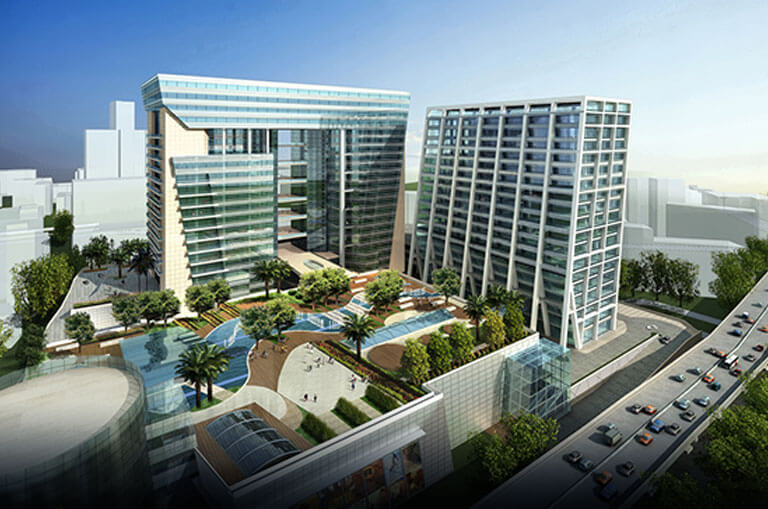
Building a Legacy of Inclusivity and Innovation: Dubai’s $200 Million Endowment Real Estate Projects
Dubai’s $200 million endowment real estate projects represent a transformative approach to urban development, merging traditional values with modern innovation to create a lasting impact on the city. This initiative is more than just a financial investment; it embodies a strategic vision for sustainable growth and community enhancement. Here’s a closer look at how these projects are shaping the future of Dubai:
1. Combining Awqaf Principles with Modern Development
Awqaf—the Islamic endowment system—is deeply rooted in Dubai’s cultural and religious heritage. Traditionally, awqaf involves dedicating assets to charitable and community causes, often including education, healthcare, and social welfare. Dubai’s $200 million endowment projects are a contemporary extension of this tradition. By integrating the principles of awqaf with state-of-the-art real estate development, Dubai is:
- Ensuring Long-Term Impact: Unlike conventional real estate investments, these projects are designed to generate ongoing benefits for the community. The endowment model ensures that the funds are used not just for immediate development but also for sustained community support.
- Fostering Social Responsibility: The projects are aligned with the city’s values of social responsibility and inclusivity, ensuring that a portion of the benefits directly supports societal needs and community welfare.
2. Enhancing Dubai’s Skyline and Infrastructure
These endowment projects are set to redefine Dubai’s skyline while making significant contributions to various sectors:
- Urban Development: The projects include high-profile real estate developments that enhance Dubai’s architectural landscape. Iconic buildings and developments not only elevate the city’s aesthetic but also attract global attention and investment.
- Infrastructure Investment: Beyond aesthetic improvements, these projects are crucial for expanding and upgrading Dubai’s social, educational, and healthcare infrastructure. This includes building schools, hospitals, and community centers that cater to diverse needs and foster a high quality of life for residents.
3. Creating an Inclusive Growth Model
Dubai’s approach to these endowment projects emphasizes inclusivity and equity:
- Benefiting All Sectors of Society: The projects are designed to serve various community segments, ensuring that the benefits are widespread and inclusive. This might involve affordable housing, accessible healthcare facilities, or educational institutions that cater to all income levels.
- Community Engagement: By involving community input in the planning and execution phases, Dubai ensures that the projects address the real needs and preferences of its residents, fostering a sense of ownership and engagement.
4. Setting a New Standard for Urban Development
Dubai’s endowment real estate projects are setting a benchmark in urban planning and development:
- Sustainability: The projects are designed with sustainability in mind, incorporating green building practices, energy efficiency, and environmental stewardship. This forward-thinking approach ensures that the developments are not only impressive but also environmentally responsible.
- Innovation and Growth: Dubai’s commitment to innovation is reflected in the cutting-edge technologies and design principles used in these projects. This positions the city as a global leader in urban development, showcasing a model that other cities may look to replicate.
5. A Vision Rooted in Tradition and Forward-Looking Ambition
Dubai’s endowment projects illustrate a vision that harmonizes tradition with modernity:
- Rooted in Tradition: By incorporating awqaf principles, the projects honor Dubai’s cultural and religious heritage, ensuring that traditional values are upheld in contemporary contexts.
- Boldly Forward-Looking: The projects reflect Dubai’s ambition to be a global hub of progress and opportunity. The city’s focus on innovation, coupled with a commitment to inclusivity, demonstrates a bold approach to urban development that seeks to benefit future generations.
Dubai’s $200 million endowment real estate projects are a testament to the city’s dedication to creating a legacy of inclusivity and innovation. By blending traditional awqaf principles with modern real estate development, Dubai is not only enhancing its skyline but also reinforcing its commitment to social welfare and sustainable growth. These projects are setting new standards for urban development, ensuring that Dubai remains a global beacon of progress, opportunity, and community-focused innovation for generations to come.
